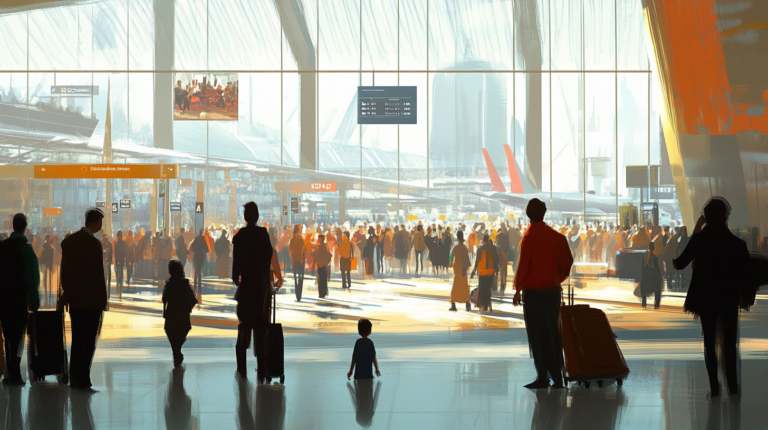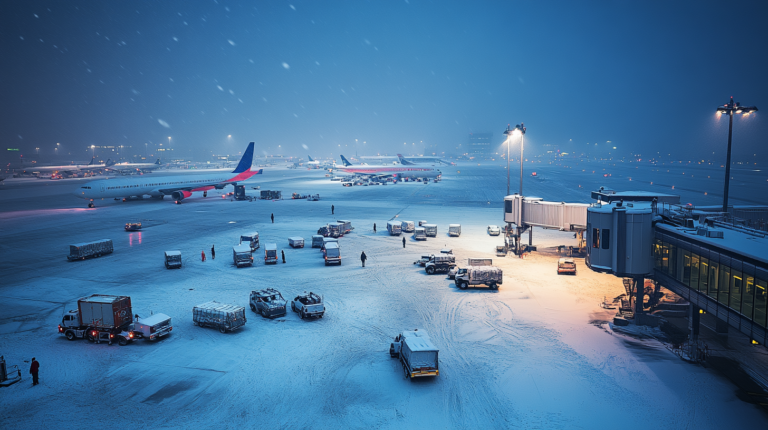Minimizing Turbulence: 6 Ways to Manage Flight Delays on Business Trips

In my experience, flight disruptions feel a whole lot longer when you’re on a time-sensitive journey for work. I’ve often found myself scanning the departures board, hoping my plans stay on course. But with a bit of foresight and flexibility, it’s astonishing how much stress we can alleviate on business trips.
1) Plan Ahead

I often start by considering an airline’s on-time performance record, looking at data from the previous year or the latest industry reports. Delta, Alaska, and Southwest usually rank high in punctuality according to 2024 airline performance metrics. When my trip depends on tight schedules, I focus on nonstop routes, because each additional stop increases the likelihood of delay.
From my own travels, I’ve learned that setting up backup plans can be a lifesaver. By keeping hotel contact numbers and alternative flight routes in a separate app or email folder, I’m ready to pivot if something unexpected arises. Having a membership with services like ITG or other global travel networks can also provide a safety net—these organizations specialize in real-time rebooking and alert systems.
Planning ahead doesn’t mean just booking carefully; it also includes preparing for possible changes. In a near-future where AI-driven flight schedules may offer predictive insights, we can capitalize on these tools to minimize downtime. Sometimes, I also double-check my destination’s local transport options so that if a delay shifts my arrival, I know the fastest way to get to a meeting.
2) Stay Informed and Flexible

Real-time updates are your best friend when disruptions threaten. I rely on apps like Navan to monitor flight status, track gate changes, and get immediate notifications if anything shifts. That kind of timely information helps me alert meeting contacts or colleagues, keeping everyone in the loop.
I’ve discovered that being open to change can save more than just time—it can preserve professional relationships. When running late, I try to give partners and clients a heads-up so they can reschedule sessions or team calls without a scramble. Early communication typically shows respect for others’ time and reduces my own stress in the process.
In 2025, we have more sophisticated alert systems and flexible booking platforms than ever before. Some airlines even offer augmented reality experiences that outline airport maps in real time if you need to find a new gate quickly. Staying informed means embracing these cutting-edge tools, whether you’re a traveler who loves to experiment with advanced tech or someone who just wants a smooth trip.
3) Know Your Compensation Options

There’s nothing worse than being delayed for hours and not knowing your rights. EU and UK regulations (EC 261/UK261) still lead the pack, offering compensation up to $700/€600 for flights delayed over three hours, cancelled routes, or overbookings. These rules can be a real financial cushion when a business trip goes sideways.
What many travelers don’t realize is that documentation is king. I make sure to photograph or scan boarding passes, receipts, and any airline announcements—yes, even those overhead display messages. Using claim services, like AirHelp or MYFLYRIGHT, can automate the paperwork. Combining your own documentation with professional assistance often leads to a faster resolution.
Industry data compiled in early 2025 indicates that nearly 40% of eligible passengers never file for the compensation they’re owed. It’s easy to miss deadlines if you’re in a rush, so setting a reminder on your phone or calendar can ensure you don’t let the window for claims slip by.
4) Make Airport Time Productive

I believe in turning every layover or delay into a moment of personal gain. If I’m stuck in an airport, I’ll scout out a quiet corner or a lounge to finalize a presentation. According to a 2024 study, productivity levels tend to surge in quieter environments, so sometimes a lounge with a dedicated workspace is worth the entry fee.
For those with meal or lodging vouchers, a delay can transform into a mini retreat. I’ve indulged in a quick spa service when the hours on the ground start to pile up. Spa treatments can drastically improve mental clarity, especially when a stressful meeting lies ahead.
In my past travels, I’ve made the most of airport Wi-Fi to catch up on emails and synergy calls. Some airports now even offer augmented reality tours or relaxation pods—embracing these features can help you see your delay not just as lost time, but as a chance to innovate and recharge.
5) Submit a Claim Promptly

When business objectives collide with unexpected cancellations or massive delays, the ripple effect can be significant. I recall a trip where I missed a crucial brainstorming session, leading to a budget reallocation that impacted the entire quarter’s goals. Filing a claim quickly ensured my company and I were able to recoup some of the unforeseen expenses.
I keep close tabs on everything—each new ticket, every rebooking, each meal purchase. If you’re exhausted by the end of a trip, it’s easy to forget to file. That’s why I rely on automated services like Skycop for efficiency, or I go straight to the airline’s website if I have all my details neatly organized.
Procrastination can mean lost compensation. I’ve personally seen colleagues lose out simply because they didn’t have immediate access to receipts or proof of delayed boarding. Jumping on claims while your memory is fresh makes the difference between getting reimbursed and missing out entirely.
6) Embrace New Federal Protections

Starting in 2024, travelers in the U.S. gained additional muscle in the fight against airline delays. In my own countrywide hops, I’ve noticed airlines have become more proactive in offering free rebookings and quicker refunds. This not only streamlines the process, but also ensures that business travelers can keep forging ahead with minimal hiccups.
According to recent Department of Transportation updates, airlines must now issue payments in as little as a week if you decline travel credits—crucial for business travelers who can’t afford to wait around. Whenever I’ve had to request a refund, the improved turnaround times helped me pay off unexpected expenses that popped up mid-trip.
These protections also cover extra amenities like meals or ground transport. While it won’t make a sudden aircraft maintenance issue vanish, it does show a shift toward more traveler-focused policies, and that’s something I’ve been eager to see for years. My hope is that these measures continue to evolve, opening the door for even more robust safety nets in the future.
Final Thoughts

Flight delays can be daunting, but a calculated blend of preparation and adaptation keeps those tough travel moments in check. By aligning your business itinerary with real-time tech, strategic airline choices, and thorough documentation, you bypass the worst of the turbulence. Whether you’re juggling connecting flights or heading straight to a major conference, an organized approach is always your best ally.
I’ve seen firsthand how the folks who rise above delays often do so by harnessing both tech-forward tools and timeless practicality. If you’re ready for anything, a disrupted schedule won’t stand in your way for long. You’ll arrive at your destination with confidence, even if you had to switch gates three times en route.
Amelia Yeaher’s Take
I love seeing how travelers adapt to the unexpected, and it energizes me to weave in fresh storytelling elements about the intersection of aviation and emerging technology. In a future marked by AI-driven insights and augmented reality overlays, a delay can become more than just lost time—it’s an opportunity to explore new platforms, test innovative apps, and deepen our appreciation for the marvel that is modern flight.
Ultimately, I believe that combining a spirited curiosity with solid planning is the key to unlocking a better travel experience for everyone. After all, innovation and preparation are two sides of the same coin.
Seat5A is your portal to more travel inspiration, tips, and insights.






